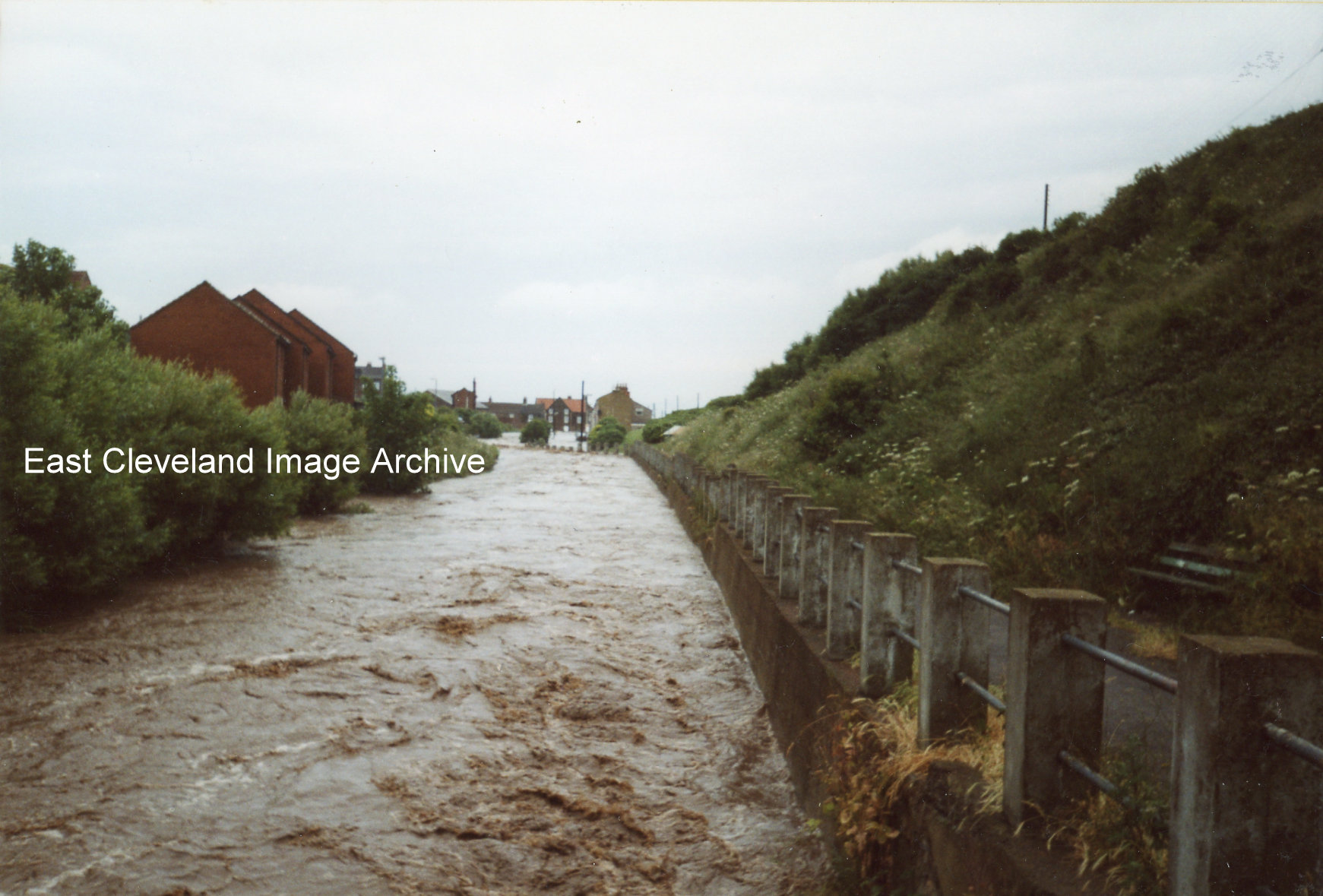
The water rushed down the beck, and swept straight on at the end of Zetland Row.
Image courtesy of Kathleen Hicks.
|
|
||
 The water rushed down the beck, and swept straight on at the end of Zetland Row. Image courtesy of Kathleen Hicks.
The caption says it all – the favourite occupation of all sea-side dwelling children – splodging! 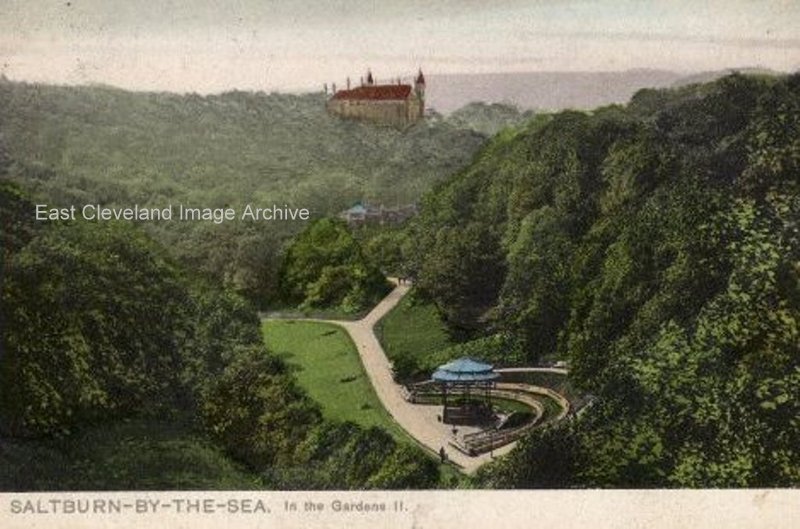 A lovely coloured postcard view of the valley gardens (most likely taken from the Half Penny bridge), complete with bandstand; with Rushpool Hall in the background looking rather like a fairy tale castle. Image courtesy of Mike Holliday. 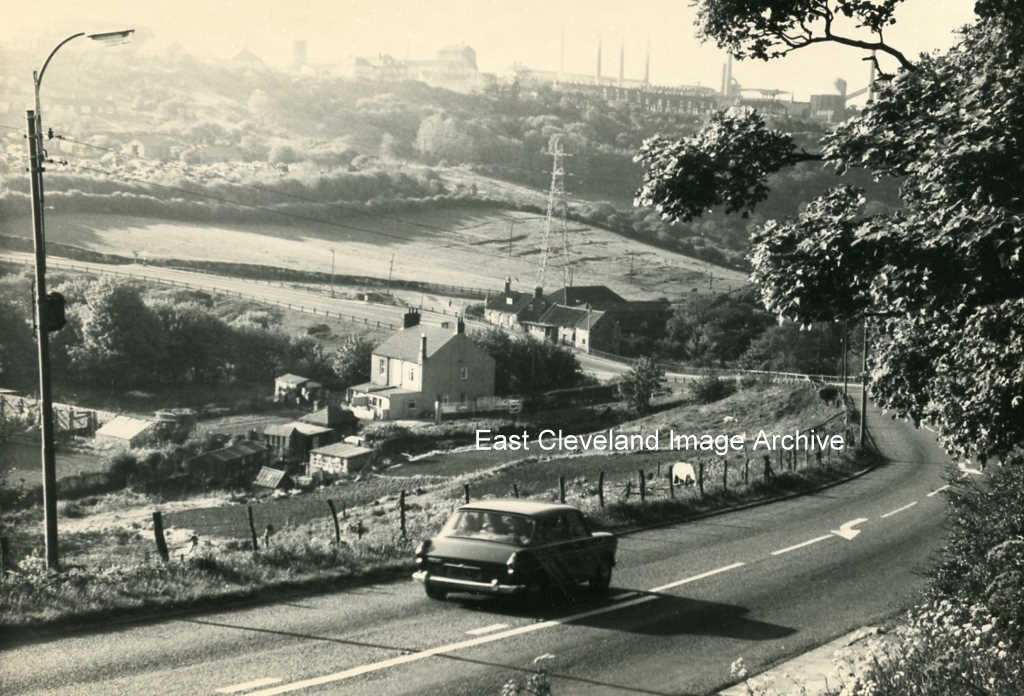 This photograph of Loftus Bank was taken by Mike Grange on 3rd June, 1972. The ridges in the field behind Kilton Mill are the site of the Australian Army camp in WWI. Image courtesy of Carolyn Richards. 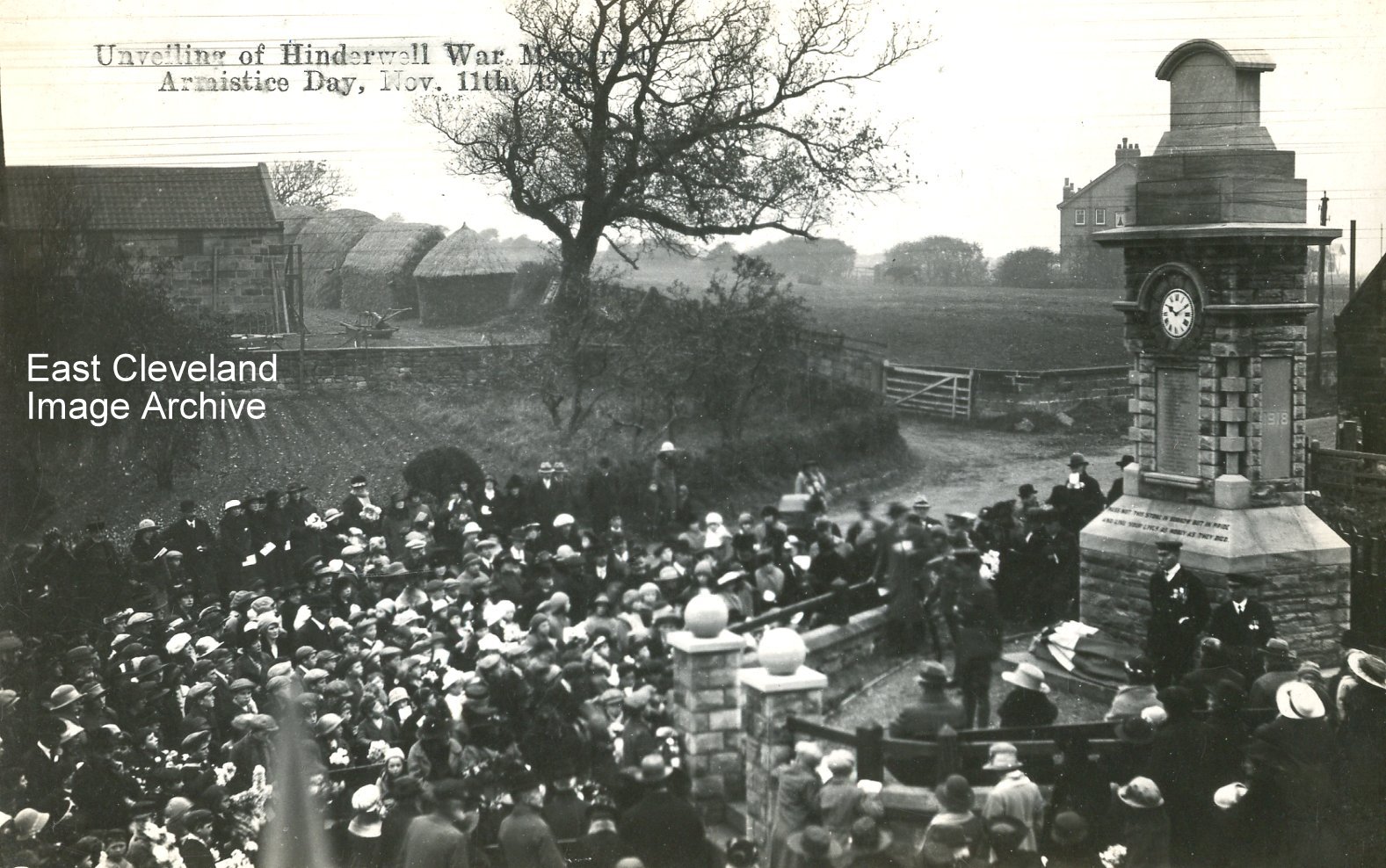 This photograph shows the unveiling ceremony of Hinderwell War Memorial on Armistice Day, 11th November 1921. The Memorial stands 22 feet tall at the junction of the A174 and Runswick Lane. It was constructed from Aislaby and Blue Bank stone from monies raised through public subscription. The unveiling ceremony was attended by Grinkle Miners’ Brass Band, at which £27 was collected to reach the final construction costs of £369; plus clock of £35. The image came from Carolyn Richard’s grandfather; William Grange he was the Co-op Manager at Hinderwell. Image courtesy of Carolyn Richards 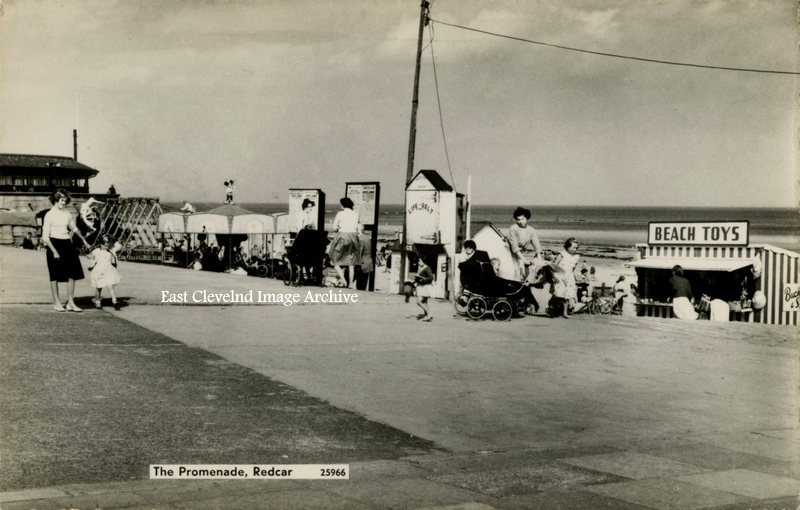 Do you remember the promenade at Redcar like this? With a sunny day and plenty of beach (depending upon the tide), there could be no where better! Donkey rides, or even roundabouts and swings, as well as a Pacittos ice cream if you so desired. This image from a postcard must have been on a quieter day, but isn’t the pram fantastic! Image courtesy of Joan Jemson. 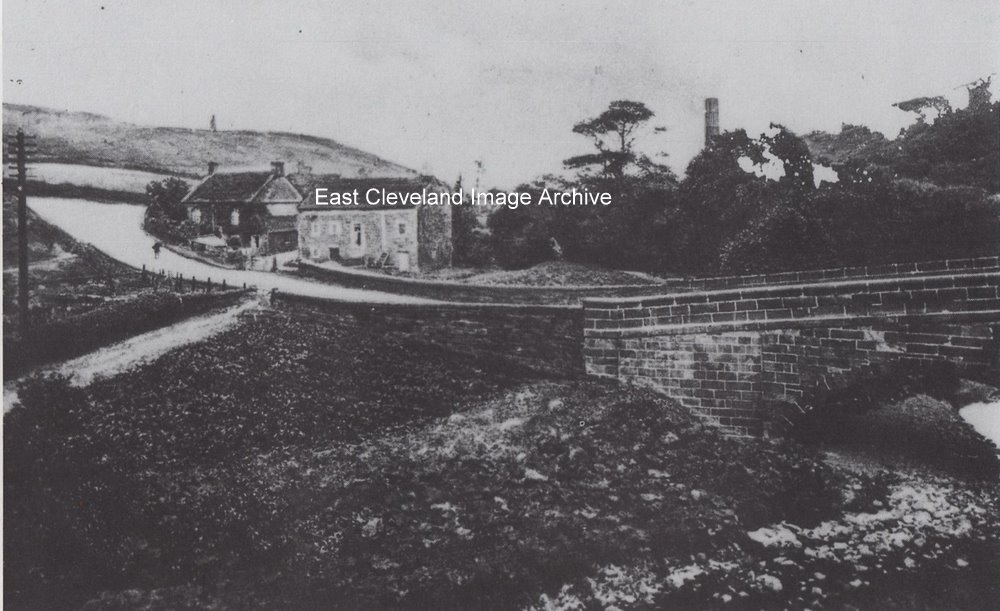 Lovely old photograph of Kilton Mill, the only sign of the works on the hill being the tall chimney showing over the skyline, can anyone date this photograph?
Liverton Mines, but not as we know it today, what date would you put on this photograph. Ray Brown tells us: ”The area the children are playing on will now form part of the row of houses known as Liverton Road and by the style of the Liverton Road Houses I would suspect these were built in the 1930s – so my guess is circa 1910-20s? Google Earth says the Houses facing are called St. George’s Terrace – not quite sure on that one, I can say that the end one was once occupied by Sister Grace Parks – a staunch Methodist.” Graham Suggett advises: “I can help a little. My mother (Florence Brown) born at Number 3 Graham Street, Liverton Mines, was in service as a girl of 16 from August 1919 until April 1921 with Mrs C. W. Gains who lived at 1 Cliff Terrace, Liverton Mines. I have happy memories of visiting my grandparents, Alice and Harry Brown and many happy hours in Liverton Wood with Uncle Harry and his spaniel Raq.”. Graham Suggett has a further update: “Google wrong about St George’s Terrace. The picture is Cliff Terrace (Cliff without an e) and the street to the left is Liverton Terrace. I cannot remember Zeppelins but I was there to see a Lockheed Hudson crash during WWII in what is now St Cuthbert’s Walk. I well remember that there were a lot of remains of buildings from the ironstone mine amongst which we played and also the skyline was dominated by the slag heaps. Very occasionally we ventured up those to the north though walking was difficult because of the loose slag. The big one to the south was separated by a path leading to Liverton Wood. We never dared to climb up the big one. The reservoir of the mine was still there and used by my grandfather to raise ducks. Image courtesy of Cleveland Ironstone Mining Museum and thanks to Ray Brown, Raymond Wilkinson and particularly Graham Suggett for the updates. 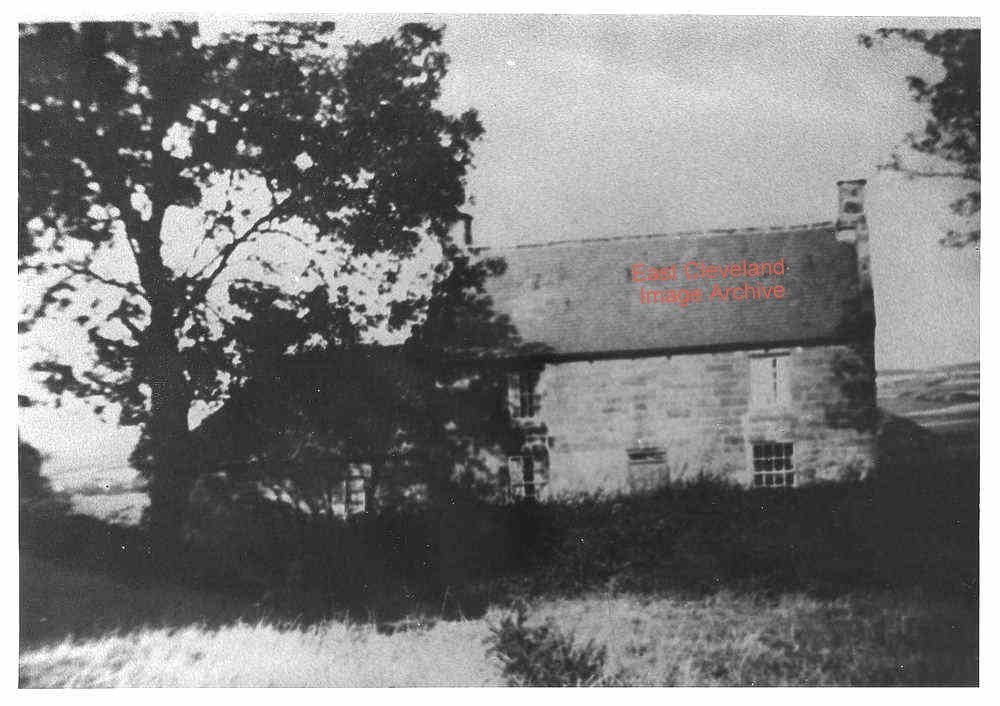 This house which is no longer there, stood in the middle of a field quite a way up Loy Lane, occupied at one time by the Armsby family, the water was taken from a well in the field. Sheila Dwyer tells us: ”Loy House was the first place I lived in when I came home from hospital in June 1948. This was the home of my Great Grandparents Armsby, her name was Minnie. I’m not certain but I think his name was Albert. My mother’s maiden name is Violet Marshall. Her mother was Sarah Elizabeth Armsby from Staithes and then Loftus. I think there are Armsbys still living in Loftus?” Marc Armsby also tells us:” William and Minnie were my grandparents. My Dad, Herbert, was the youngest of their nine children. Sarah Elizabeth born 1905, Hilda born 1907, Florence born 1909, William Henry born1911 (Died in January 1945 in Burma), Charles born 1914, Eva born 1916, John born 1919 (I think he died in Sicily), Ernest born 1921, Herbert born 1924.” Billy Parkin advises: ”There were other children to William and Minnie Armsby, Hilda, Florrie and Herbert.” Norman Patton has added: “I think that Minnie Cason married William Armsby in the summer of 1904. It is likely that their first child was Sarah Elizabeth. They subsequently had five more children as far as I can see; William H, Charles, Eva M, John (later Private John Armsby who was killed in action in August 1943) and finally Ernest who was born in late 1921.” Carol Armsby finishes with: “My mam and dad used to live at Loy House but moved to Loftus when I was 6 months old, so my brother Michael could go to school. I went to Loy House a few times before it was pulled down with my dad Ernest who bless him has passed away, along with my mam Mavis; my gran Minnie was a lovely lady and so was grand dad Albert although I only knew a bit about them as they died when I was about 5 years old. Yes there are a couple of Armsbys left at Loftus but by marriage only the last Armsby who was my Aunt Eva died a couple of years ago now bless her.” Thanks to Sheila Dwyer, Marc Armsby, Norman Patton, Carole Dewings and Billy Parkin and Carol Armsby for the updates. 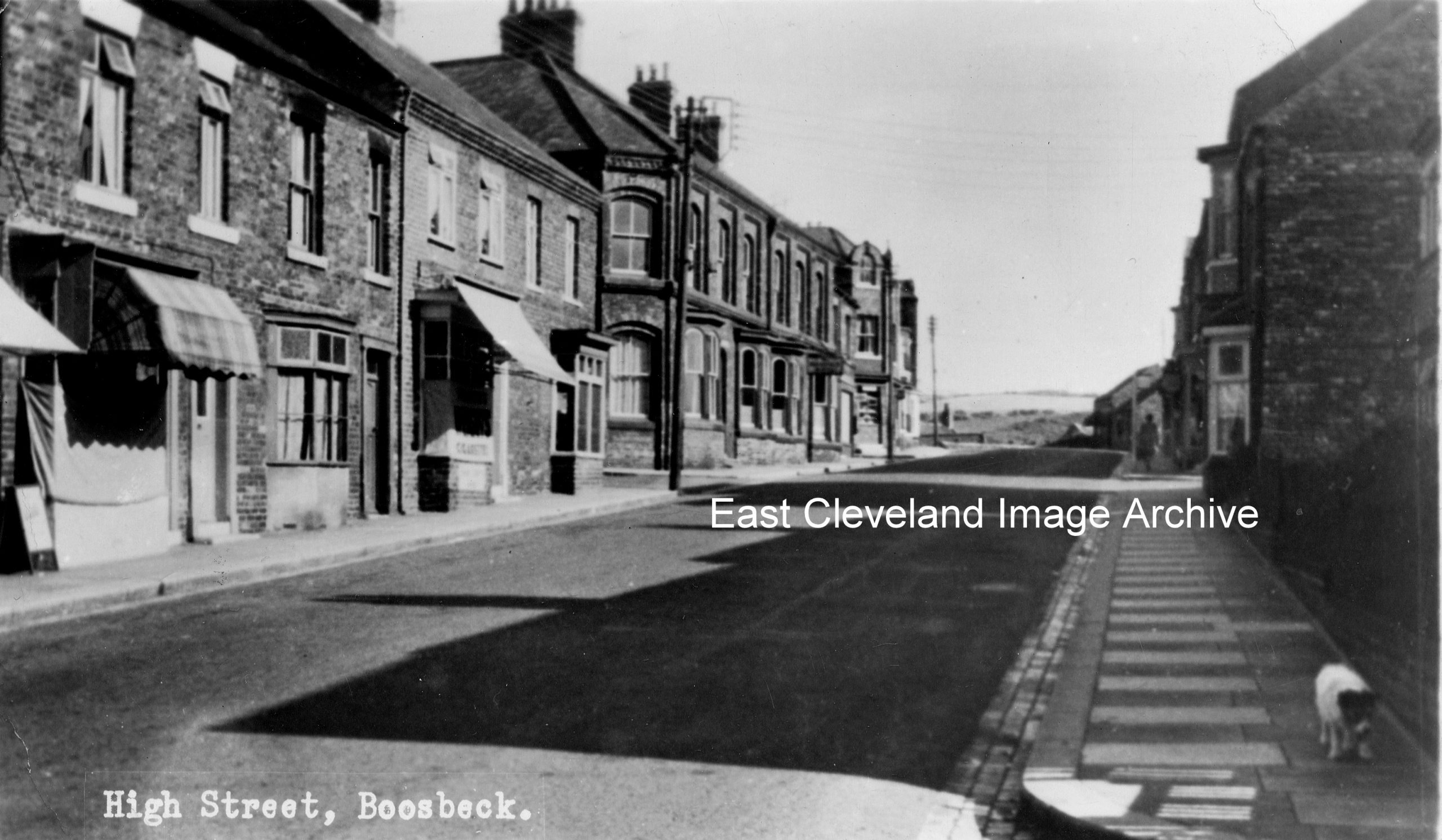 Not Loftus this time but Boosbeck, for a change! A view up the High Street; the Boosbeck Hotel (or Commercial Hotel as it was at one time known) is visible on the left middle of the image. Image courtesy of Cleveland Ironstone Mining Museum. |
||
Recent Comments